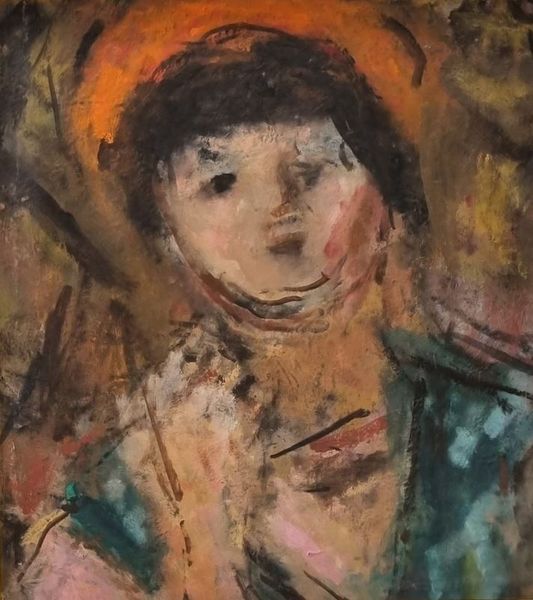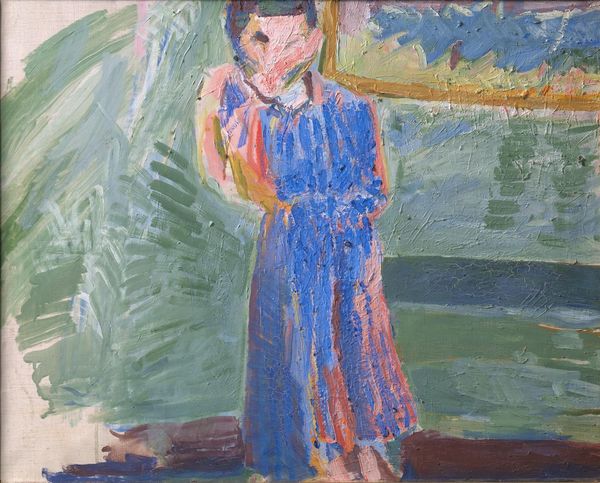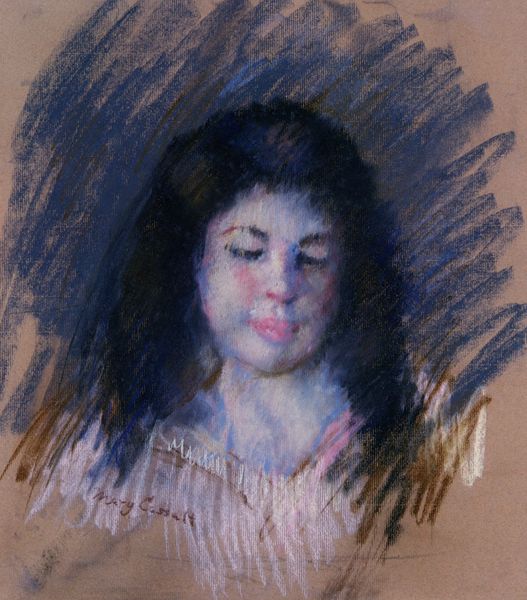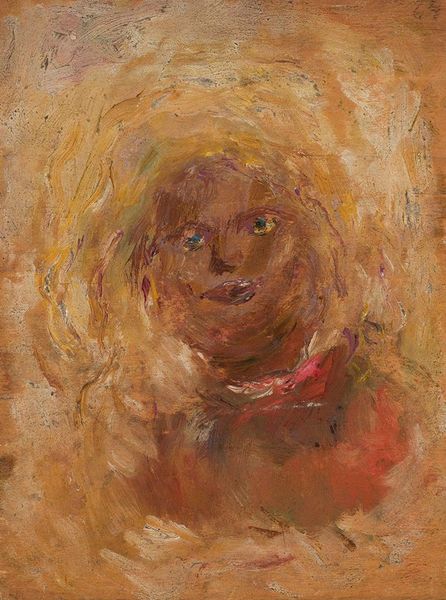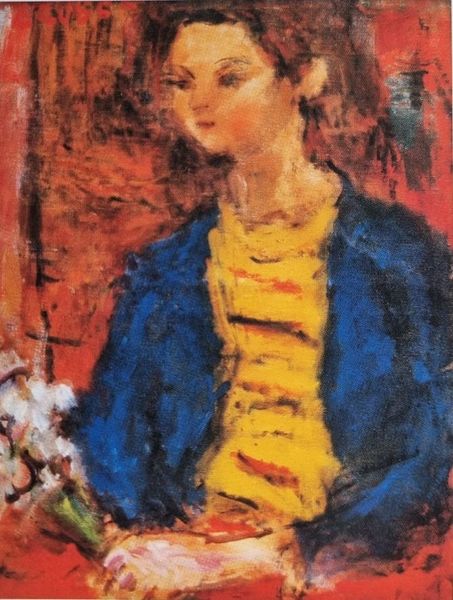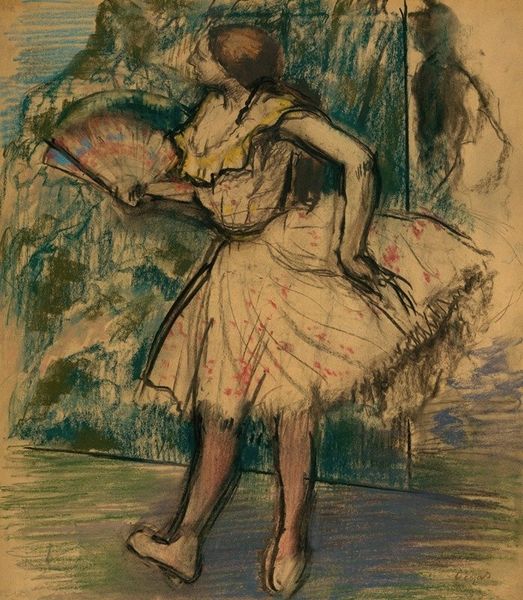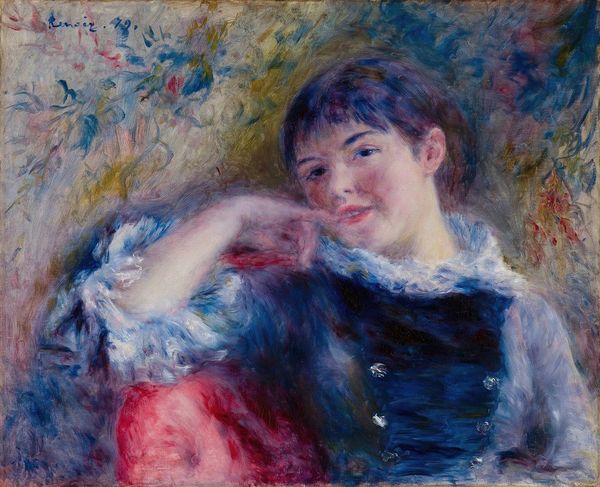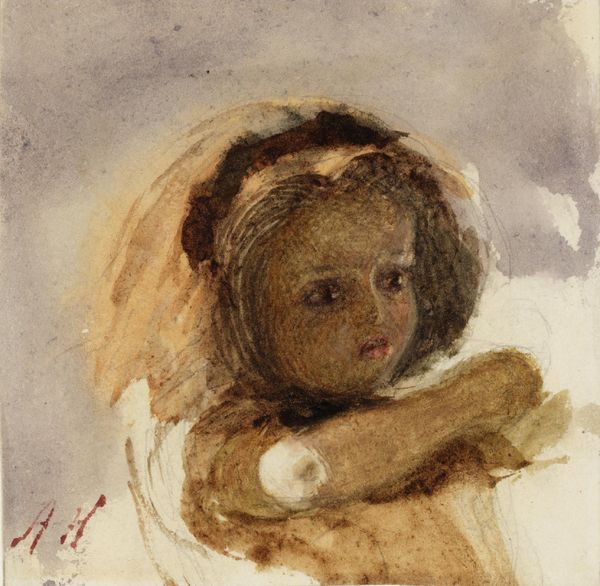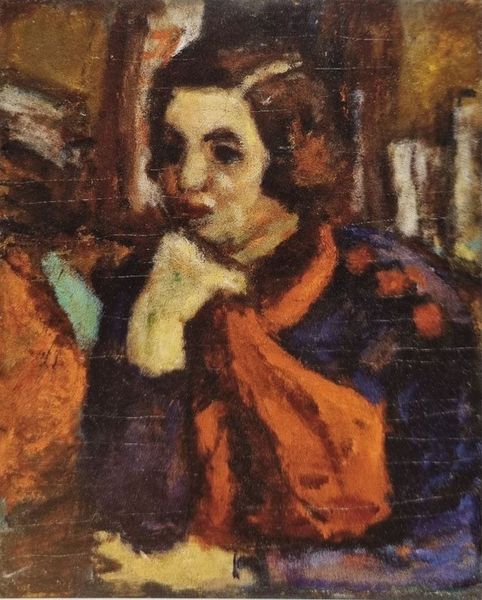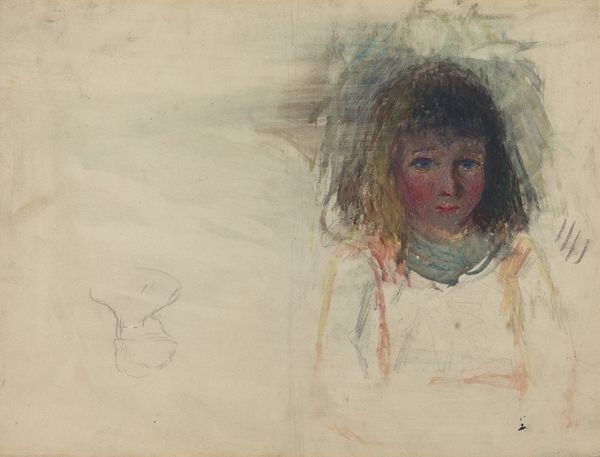
drawing, pastel
#
portrait
#
drawing
#
figuration
#
intimism
#
pastel
Copyright: Public Domain: Artvee
Curator: Here we have Édouard Vuillard's "Mlle. Alice Kapferer," likely rendered in pastel around 1922. It captures a young girl in a softly blurred setting. Editor: The immediate feeling I get is one of transience. The medium itself, pastel, seems to lend to this fleeting, dreamlike quality. Her pose and the muted colors contribute to a kind of wistful serenity, wouldn't you say? Curator: Indeed. Vuillard's connection with the Intimist movement very much comes through here. This wasn't just about depicting a person; it was about conveying a sense of personal, interior life within a specific milieu, hinting at the domestic sphere of the bourgeoisie at the time. Editor: It's interesting how her positioning feels so central, but also somewhat disconnected from the background. Is that indicative of the era's focus on the individual? Curator: Perhaps partly. But also think about the socio-economic forces shaping portraiture at the time. Portraits were increasingly becoming accessible beyond the aristocracy, symbolizing middle-class aspirations. Displaying them became a way of reinforcing social status and conveying cultural refinement. Editor: I also read a delicate vulnerability in her stance, amplified by the almost unfinished quality. What does this say about the perception of childhood or the gaze directed at young girls during this time? Does the seemingly innocent depiction possibly reflect deeper anxieties surrounding femininity and representation? Curator: Those are pertinent questions. We also need to think about how museums influence our viewing of these artworks. This image now circulates within a controlled cultural arena, inevitably shaping perceptions of femininity of the past through today’s expectations and interpretations. Editor: That is important. Understanding the historical reception versus the contemporary significance encourages us to see beyond conventional narratives. Her look of both assurance and uncertainty continues to fascinate me. Curator: It reminds us that a portrait like this wasn't purely about replicating physical appearance; it was about establishing and confirming identity within very specific socio-cultural settings. Editor: Looking closely reveals the painting process as a cultural and historic record. Curator: Indeed. It enables dialogues around power, representation, and the evolving significance of art institutions, ultimately shaping our understanding of historical realities through contemporary lenses.
Comments
No comments
Be the first to comment and join the conversation on the ultimate creative platform.
